Review Nissan Ariya: Well meant but not always well done
The Nissan Leaf was once among the e-mobility pioneers but fell behind in recent times. The long-announced Ariya was supposed to help Nissan catch up again and target the growing majority of EV adopters. Yet, the new platform and concept do not deliver throughout, as our driving test shows.
***
It had not been a great start, to begin with: When presenting the new e-SUV in July 2020, the Nissan Ariya was to open a “new chapter” for the brand’s electric cars. But the launch was prolonged as the Corona crisis disrupted supply chains worldwide. Instead of mid-2021 as planned, Nissan could not deliver the new vehicles until summer 2022 – two years after the Ariya debut.
At the same time, the delay also meant two more years to develop further and perfect the software, theoretically. The hardware was under a design freeze and committed to development status.
Instead of a halfway affordable compact car like the Leaf, which could have rivalled the VW ID.3 or the MG4 Electric, the decision-makers in Japan opted for the SUV segment – an understandable choice within the global market environment. But Ariya also targets a different clientele. Unlike Qashqai or X-Trail buyers, who are more concerned with the price-performance ratio – sometimes with a focus on style, sometimes with an eye on utility – pricing positioned the Ariya at the upper end of the mid-size SUV segment. The wood look, copper accents and uniquely designed ambient lighting are intended to create a premium feel.
This, we can already reveal, will make all the difference when deciding whether the Ariya is a successful electric car or not.
Larger battery than the competition but no greater range
Let’s start with the exterior for a moment: Nissan provided us with a test car painted in ‘Aurora Green’, a pretty noble but very dark green. In fact, the paintwork was so dark that it looked black in the dull December light; only in the few sunny moments during testing did the green shine through. We can’t say for sure, but in summer, this should look really good, different from most cars out there, but not too flashy. If you like flashy, you may go for the two-tone ‘Akatsuki Copper’ paint with a black roof. In contrast to our test car, the black design elements, such as the closed front grille, stand out much more. The test car in Aurora Green looked completely different, as the dark air intakes were also concealed.
More important for our test than the colour: underneath the bodywork was the large battery and front-wheel drive, i.e. 87 kWh in the battery and 178 kW at the front wheels installed. With the 19-inch rims of our test car, the WLTP range on paper is 533 kilometres. Counting in the winter tyres fitted, it will, of course, be less. By the way, the 87 kWh is the usable net energy content; the underbody packs a total of 91 kWh.
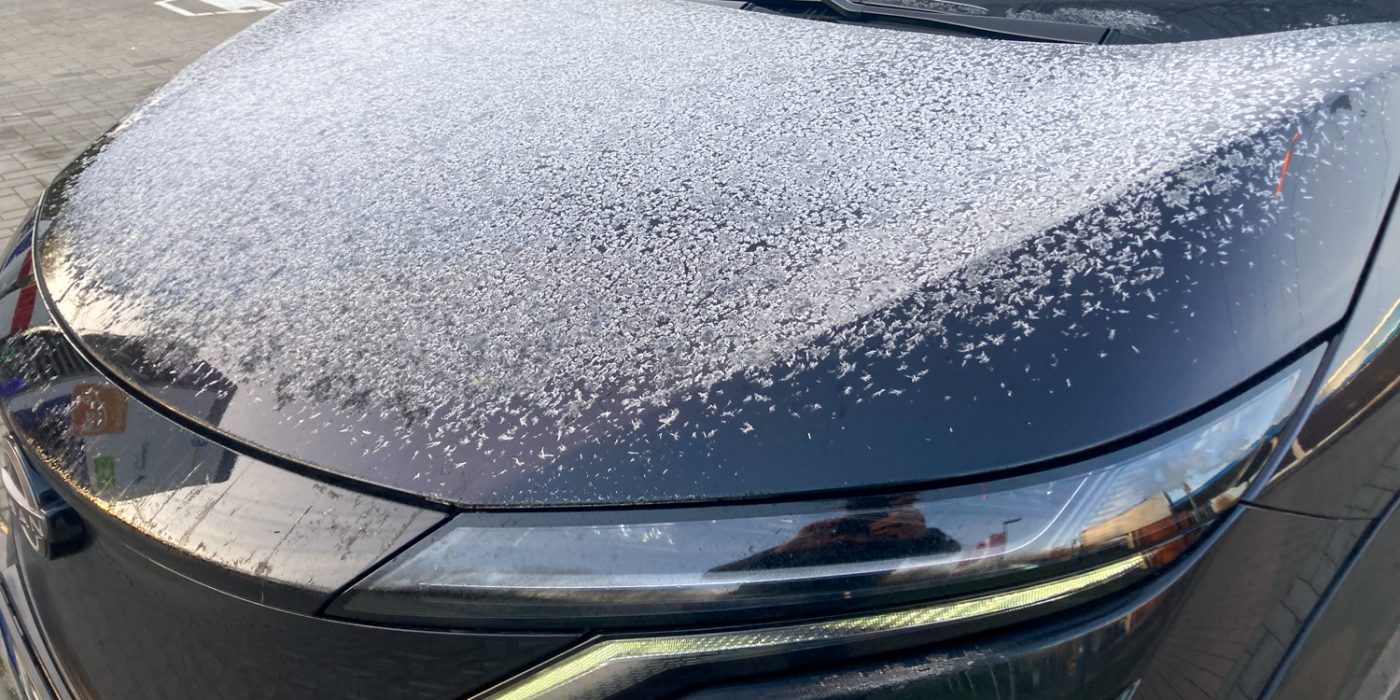
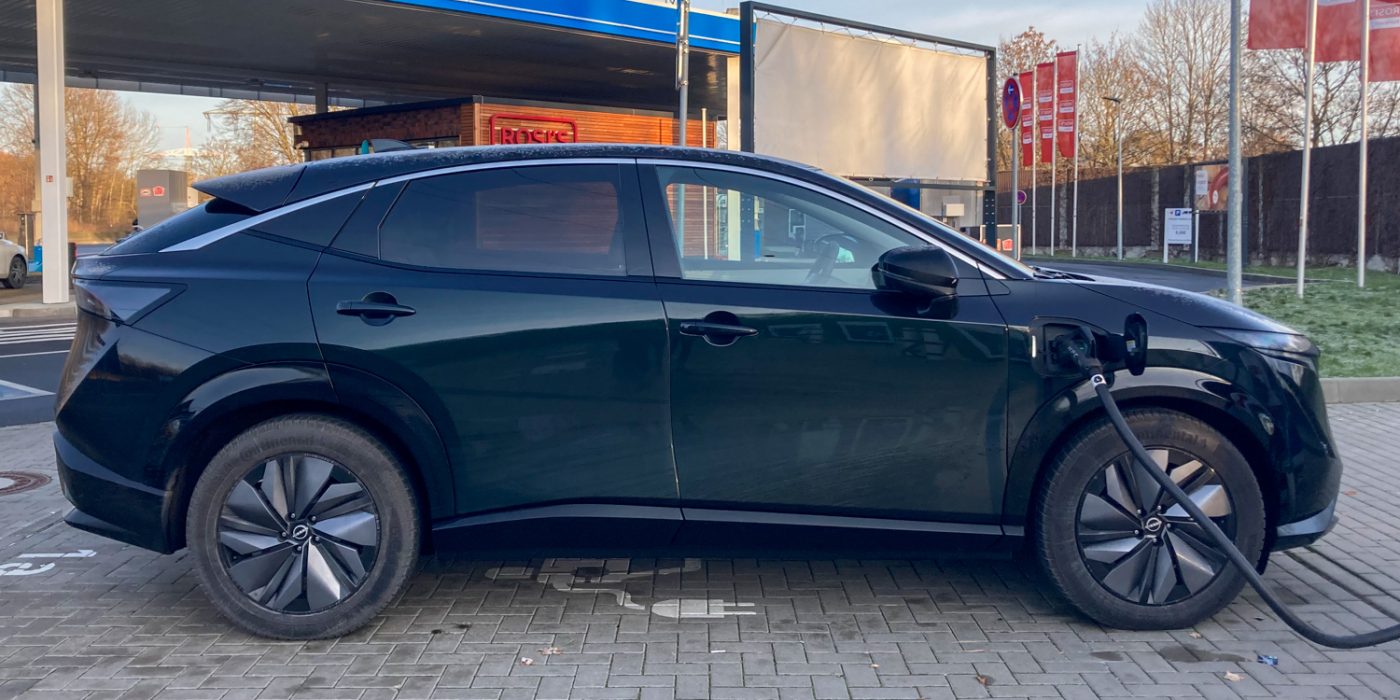
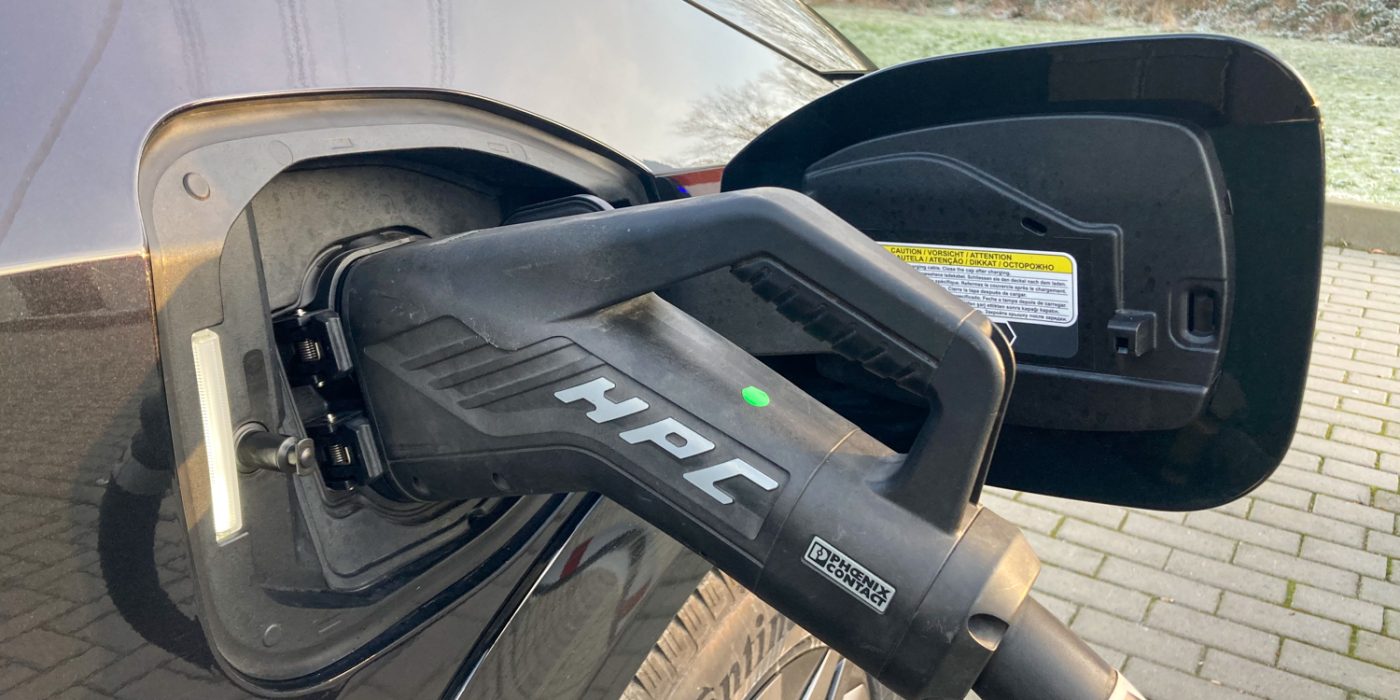
These are decent and probably more than sufficient values for most customers, especially since, according to the factory, the battery can be charged from ten to 80 per cent in around 35 minutes with up to 130 kW. The Ariya with a large battery for AC charging is equipped with a 22 kW on-board charger as standard. This is unrivalled in the segment, regardless of the price range.
But does the Ariya deliver what the data promises on paper? And has Nissan learned from its EV experience, such as the Leaf’s Rapidgate?
Critics would probably answer “no” just by looking at the data already mentioned. A VW ID.5, for example – with its sloping rear, the Ariya is more similar to the ID.5 than the ID.4 – achieves 520 kilometres in WLTP with a ten kWh smaller battery. The Tesla Model Y Long Range with 19-inch wheels even reaches 565 kilometres, also with a smaller battery than the Nissan and, above all, with a disproportionately stronger all-wheel drive.
After more than 1,300 test kilometres, we can confirm that the Ariya is not the most efficient e-SUV on the market. On average, the consumption was 23.6 kWh/100km, which means 368 kilometres remain of the 533 WLTP kilometres. At cruising speed of 130 kph and slightly below zero temperatures, it was around 28 kWh/100km, which means that a charging stop would be necessary after 300 kilometres at the latest, or even earlier, of course, if you leave a little buffer.
Charging power is sufficient but not outstanding.
When driving overland (and in single-digit plus degrees), we achieved a consumption of 18.5 kWh/100km, which would result in a decent range of 470 kilometres. However, this was only possible in eco mode and with a very anticipatory and efficient driving style. If you stay in normal driving mode and don’t pay much attention to your driving style, the consumption will probably settle at 20 to 24 kWh/100km, depending on temperatures and other conditions. Or between 360 and 435 kilometres.
This is probably not for those who want to save money, but this target group will rarely opt for an electric SUV. For commuters and families, the range of the Ariya is rarely a concern, with a wall box at home or charging facilities at work, it is no longer a problem. The situation is different for frequent drivers because it is not only the range that counts but also the duration of the journey, including charging times.
And here, the picture is somewhat differentiated: 130 kW in a vehicle that came onto the market in mid-2022 is not outstanding. From the beginning, Nissan emphasised that it was more concerned with a constant, flat charging curve than with a short peak in charging power. We never reached Nissan’s claimed 130 kW at any point during our test. Even after 300 kilometres on the motorway and with the battery preconditioning on (more on this in a moment), the display showed 115 kW for a few moments at ten per cent SoC. At 13 per cent, the system reduced the power to 103 kW. The Ariya maintained this level between 103 and 106 kW until 60 per cent charge, but at 80 per cent, it was still 82 kW. This meant that we could easily reach the specified time window of around 35 minutes but not 130 kW.
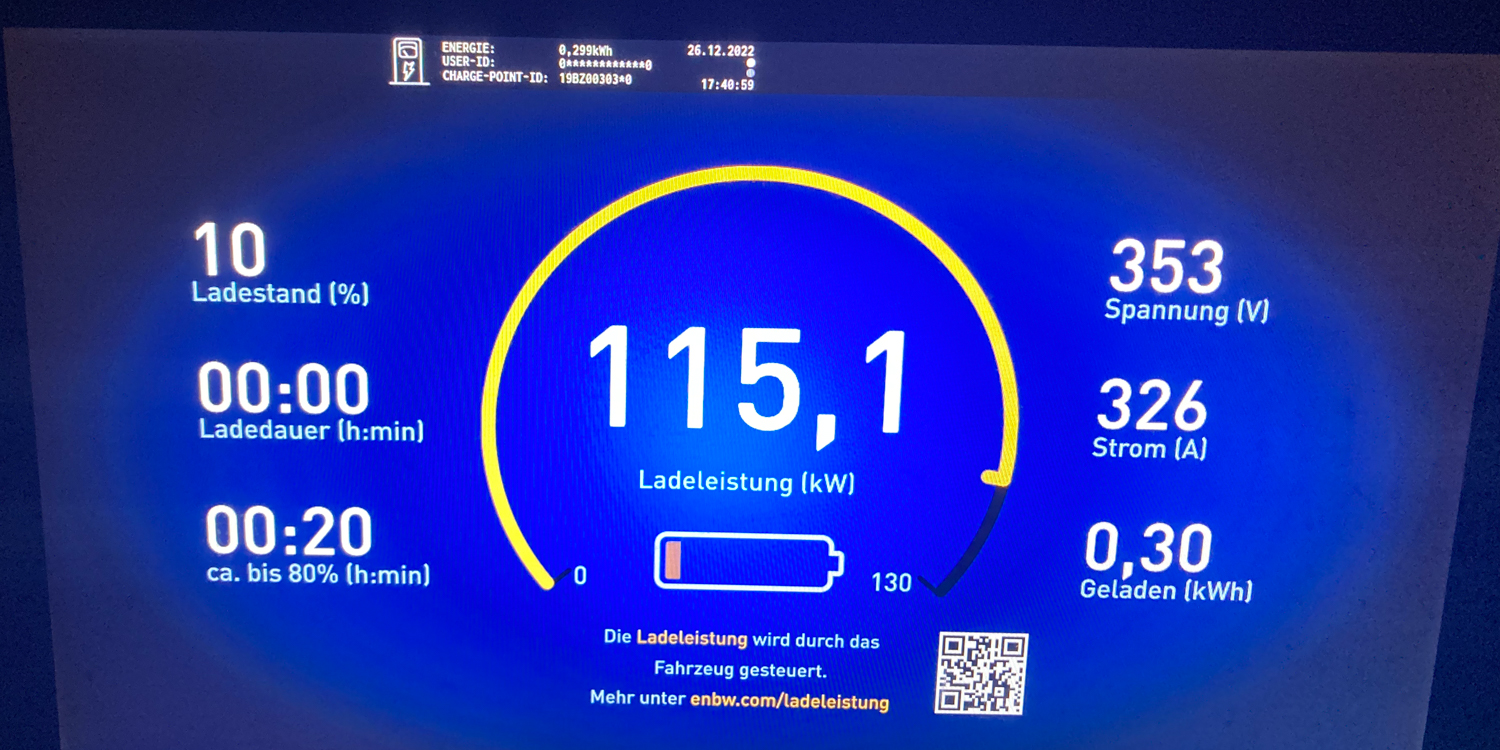
At another charging stop, with the battery as warm as possible and ten per cent SoC at the fast charger, the picture was the same: no 130 kW were reached, but 36 kWh were recharged in 21 minutes – an average of 99 kW.
The situation was somewhat different at temperatures below freezing. Charging from four to 80 per cent took 50 minutes at four degrees below zero. During this time, 66 kWh were charged, making 78 kW on average. If you plug in the Ariya with a cold battery at a higher charge level (for example, to recharge in the evening before a planned long trip the next day), you have to be patient. Once we needed 59 minutes for 42.5 kWh.
As with many electric cars in winter, the crucial point is the battery temperature. If it is too low, the battery management system reduces the charging power to prevent permanent damage to the cell (our colleague Christoph M. Schwarzer has explained the exact processes here). The remedy is a battery heater, which requires some energy but enables significantly shorter charging processes for the customer, even in adverse conditions.
However, the industry has not yet found a silver bullet. Some carmakers link so-called preconditioning to route planning. As soon as a fast-charging point is set as the (intermediate) destination, the battery is heated to be at the optimum temperature when it is scheduled to arrive. In order to relieve customers of as much effort as possible and also to prevent them from operating the system incorrectly, this is the preferred approach, especially among premium manufacturers. The disadvantage: if a new charging point is stored in the system or the customer prefers to navigate with another app via Apple Carplay or Android Auto, the battery remains cold. Such customers want a manual start of preconditioning to determine when the battery is heated and when it is not. The disadvantage: not every customer wants to think that much but simply get to their destination quickly and comfortably. Or some customers activate the system permanently, load the heating elements beyond usage and are also surprised by high consumption.
Still, Nissan has learned from the Rapidgate incident with the Leaf and installed a liquid cooling system and a battery heater. However, the operation is inconvenient. For example, activating/deactivating the battery heating takes six actions on the touchscreen – you have to go to the main menu, then to the settings, swipe right once to get to the EV settings, scroll down the list and there you can flip a virtual switch at last. Yes, we also had to consult the manual. If you forget this step a certain time before the quick charge stop in winter, you won’t get triple-digit charging power. If you don’t switch it off again afterwards, you will waste a lot of energy. It works but is not intuitive and easy, especially for electric novices.
We can also be glad that Nissan did not opt for the route planning variant – it mist be out this harshly. Because no matter in which scenario we had charging stops calculated on a route, it was not a good user experience. At one point, the Ariya planned for a 50 kW charger at Kaufland on the long haul, which is not only rarely free, but with a DC charging point in a supermarket car park, is also hardly a reliable option. Another matter is that 50 kW does not come close to utilising the car’s charging capacity. If you were to trust your car as a newcomer here, you would have to charge there for 1:22 hours according to the navigation system.
Charging route planning is not very helpful, especially for beginners
Another aspect: the route planning information from the vehicle does not even remotely correspond to that calculated by the ‘NissanConnect’ app. We wanted to drive our usual route from Düsseldorf to near Stuttgart – 429 kilometres. The battery was charged to 96 per cent, from which the navigation system in the car (with the known consumption, but without knowledge of the weather) planned an almost one-hour charging stop in Medenbach West at E.ON. The app, in which you can enter driving style, outside temperature and use of the air conditioning, wanted to drive through even in winter at -5° C without a charging stop. That didn’t work, but in Medenbach, we still had 38 per cent or 149 kilometres in the battery. We then charged about halfway at EnBW in Hockenheim and recorded the above charging curve.
With a bit of experience, you can ignore the suggestions of the navigation system or the app. For the newcomer, who, in the case of our test car with the paint job, would have a whopping 64,490 euros on the bill, it’s a different story. And if you offer such charging route planning in this price range, it should also work and make practical suggestions. Whether with automatic preconditioning or manually, that can still be left open. But if activated manually, then please have a fixed, quickly accessible button in the main menu or a physical button next to those for the front or rear window heating.
Stylish interior, expandable control concept
Swiftly moving to the interior, Nissan has seamlessly integrated all climate controls into a continuous wood-look strip that stretches across the entire dashboard width. As these buttons are illuminated – a slight nod to VW’s unlit sliders – they look very smart, especially in the dark. And the appearance is also miles away from simple plastic buttons or rotary knobs. Together with the continuous strip in copper design (which houses the air vents), the result is a delightful and almost high-quality ambience. The centre console is also kept in the wood look, where the switch for the driving mode, for example, is integrated flush into the surface.
But anyone hoping for better operability from the buttons than from a touchscreen will be disappointed. Unlike in the BMW iX, where the embedded buttons around the iDrive controller can be operated blindly thanks to minimal elevation, in the Ariya you have to look every time to see what you are pressing. And even then, the pressure point is not well-defined, which makes adjusting the temperature from 19.5 to 21.0° C more complicated than it should be.
The touchscreen above it could also be a little easier to operate. With time, you will undoubtedly get used to some of the steps and can adjust and move the tiles in the main menu to your preferences. On the other hand, items such as the display of the audio player or the navigation map seem a bit old-fashioned – perfectly ok in a robust X-Trail. Still, the control system falls short in the higher-positioned Ariya.
Plenty of space in the interior but less in the boot
The quality and choice of materials are mostly good but not outstanding for a 65,000-euro car. The wood trim feels good to the touch, and the same goes for the haptics of the light grey leather or suede imitation parts in the test car. However, we would not recommend them. When we received the test car, it had less than 7,000 kilometres on the clock and already had stains on the driver’s seat that could no longer be cleaned. Two minor points of criticism regarding the workmanship: on the steering wheel, the transition from the leather to the plastic controls is quite sharp-edged and shaped in such a way that the thumbs keep rubbing against this edge, depending on the hand position. Not unpleasant, but noticeable. And we tried really hard, but it didn’t work to adjust the air vents so that a continuous copper line forms visually. Of course, in everyday life the air vents are adjusted differently anyway, but there was a slight offset here and there between the individual elements, even when they are precisely centred.
At 4.60 metres, the Ariya is not one of the tallest representatives of its class, but you can still drive a longer distance with five adults. In the front, it is comfortable anyway, and in the rear, both the shoulder room and that at the legs are sufficient for three adults to sit there relatively comfortably. However, Nissan has paid for the generous interior space with a smaller luggage compartment. With a maximum of 468 litres, the trunk is significantly smaller than in the ID.5 (549 litres). The height up to the parcel shelf is sufficient for beverage crates; due to the flat rear window, there is not much additional height when the cover is removed. The Ariya is not a space miracle. In terms of variability, for example, the Nissan cannot compete with the many large compartments in the Model Y. This also applies to the utility value of the Ariya and towing capacity: the Ariya is not allowed to tow more than 750 kilos, while the competition is certified for up to 1.6 tonnes, depending on the motor.
In the Ariya, there is an additional problem with the trunk. The compartment under the variable floor is probably reserved for the charging cables – an inconvenient place if the car is loaded. There is no frunk; the drive technology is installed under the front bonnet. In the case of AC charging, the driver must go to the back of the (hopefully unloaded) boot to fetch the charging cable after getting out of the car. Then again, completely around the car to plug in the cable at the charge port in front of the passenger door. You can see from this detail that the Ariya was developed in Japan as a right-hand drive car. Immediately after getting out of the car, the driver can plug in his wall box’s permanently attached charging cable with a flick of the wrist. Only inductive charging is more convenient.
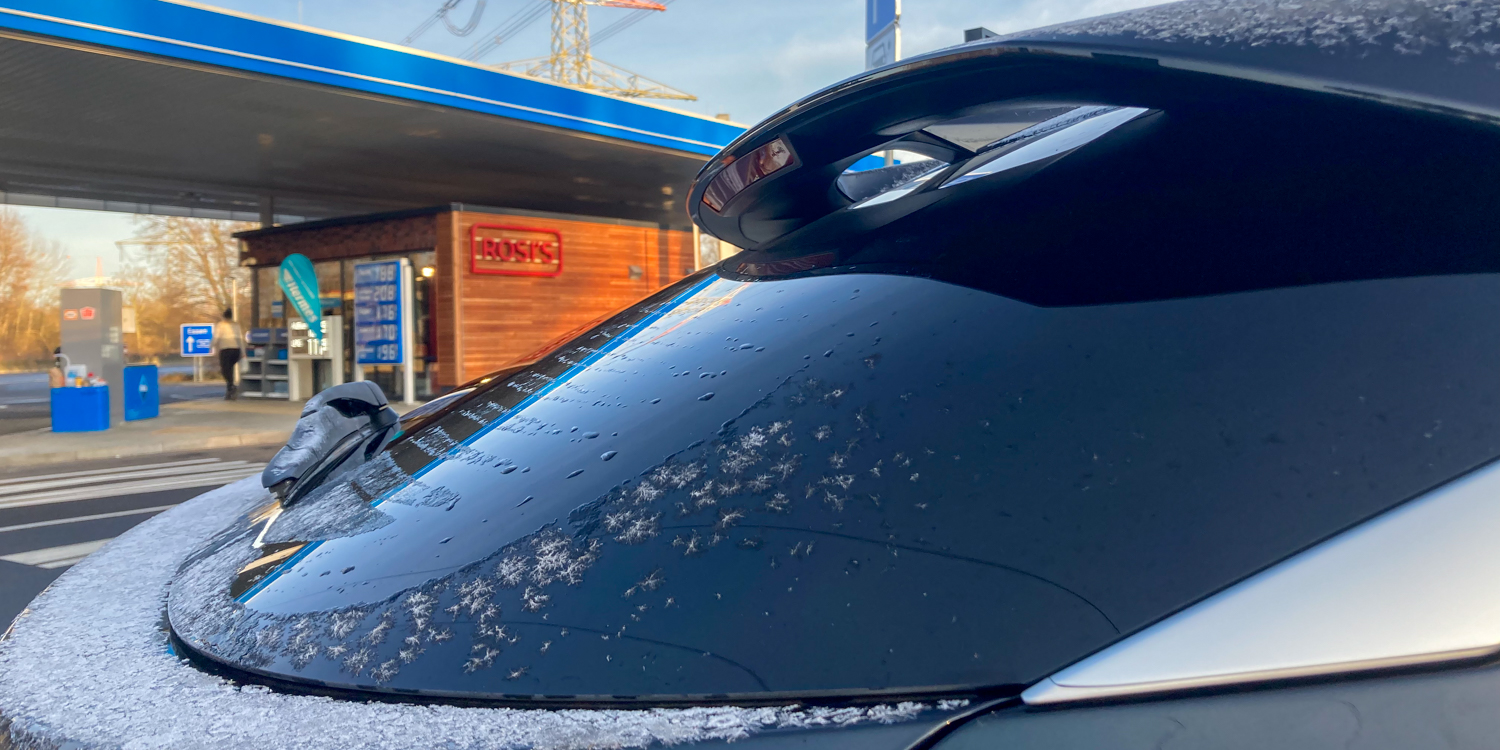
A quick thought on the flat rear window just mentioned: Nissan has given it its own windscreen wiper. Mounted at the lower end of the windscreen, it is fully exposed to the airflow over the windscreen. It might have been more elegant to mount the wiper at the top under the roof spoiler. But the big thing is that it is completely dispensable in the Ariya. When we drove the Hyundai Ioniq 5 over damp and cold motorways in December 2021, we would have liked to have a rear window wiper. In the Ariya, despite bad weather and gritted highways, we did not need the wiper once. The windscreen was always clear. So Nissan could have saved the cost.
Do we need a 22 kW charger as standard equipment in 2023?
The same can be said about the standard 22 kW charger. Presumably only few customers will really be able to take advantage of this feature. The wall box at home or the charging station at the employer usually has 11 kW or less, and charging on the road is done via CCS. The 22 kW can only be used at public AC stations. It’s undoubtedly great there because you can get even the large battery in the Ariya almost full within four hours and thus avoid the blocking charges that apply in many tariffs from then on. Those who charge at home or a lot of DC might have been happy about a lower vehicle price if 11 kW were standard. Those who need it could then order the 22 kW as an option.
Conclusion Nissan Ariya review
The Nissan Ariya is not a bad car. But also not one that can be recommended without any restrictions or explanations. If you rarely drive more than 200 or 300 kilometres a day, have a wall box, have a budget and are enthusiastic about the design, yes, buy the Ariya. You won’t be disappointed!
But among electric mid-size SUVs, the Nissan Ariya lacks outstanding features. Range and consumption are ok, nothing more. The DC charging curve is relatively flat, as promised, but there are no real advantages from ten to 80 per cent compared to other 400-volt vehicles with a higher peak and a steeper drop-off in power. Things look even worse against the 800-volt electric cars from Hyundai and Kia with preconditioning (a separate test on this will follow). And the 22-kW on-board charger is an outstanding feature, but as just described, not every customer can really use it regularly to justify a purchase decision.
All in all, the Ariya is one thing above all: several thousand euros too expensive. Unless VW, Skoda, Hyundai, Tesla and the like raise their prices significantly, the Ariya with the large battery is very expensive at 63,490 euros without the extra charge for a paint job. If it started at around 50,000 euros at the level of an ID.5 Pro Performance, it could be seen as a chic alternative to the mass-produced VW Group car. But if even an Audi Q4 50 e-tron quattro or a Model Y Long Range with its powerful all-wheel drive are cheaper to buy and run than a Nissan, the model will have a hard time.
And even without glaring weaknesses in the Ariya, marginal aspects such as the battery heating (which you don’t even need for much of the year) or the rear window wiper show that Nissan meant well but didn’t always do it well.
Reporting by Sebastian Schaal, Germany.

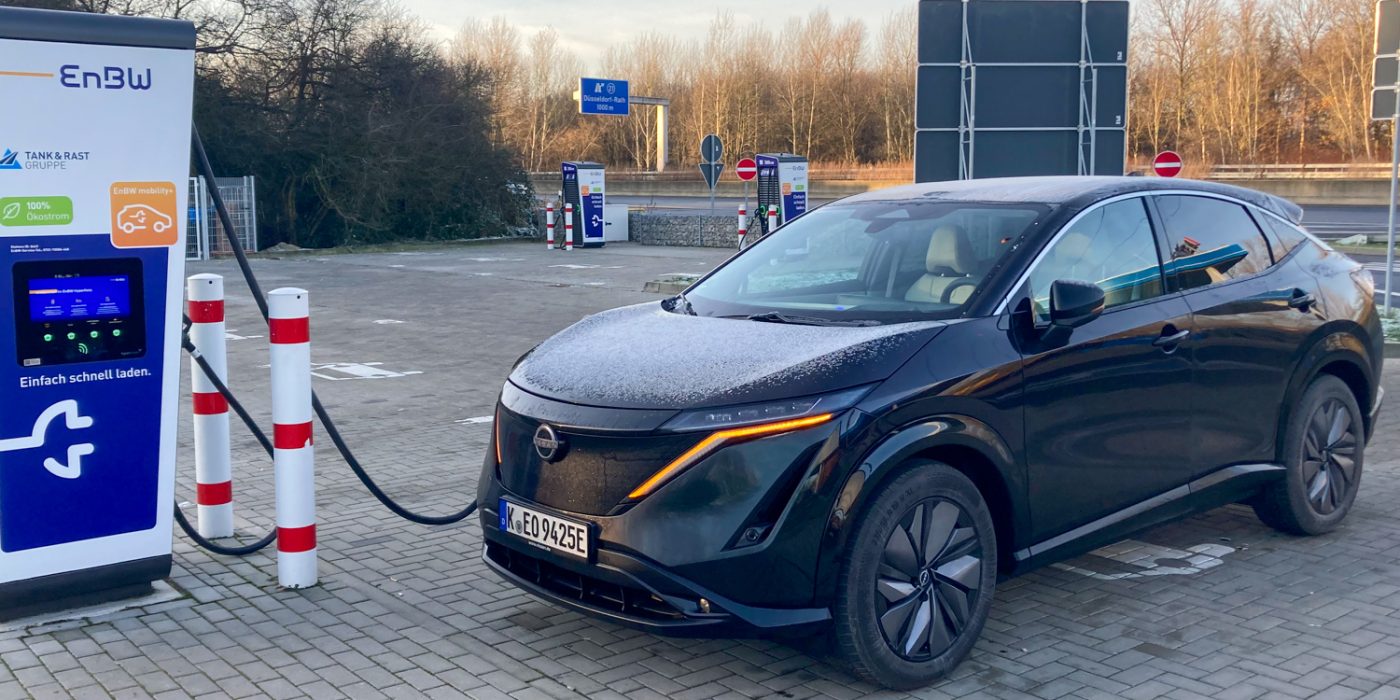


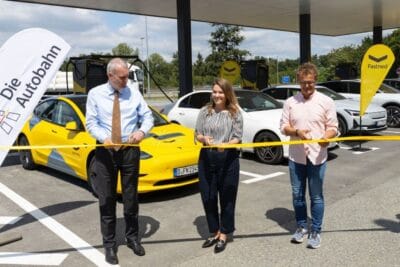
7 Comments